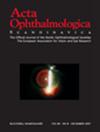The future of ocular imaging: functional OCT versus deep learning
Abstract
The future of ocular imaging lies at the intersection of two powerful technologies: Functional Optical Coherence Tomography (OCT) and Deep Learning. Functional OCT represents a leap forward in imaging technology by integrating traditional OCT with functional measurements like blood flow, tissue stiffness, tissue birefringence, oxygen metabolism and optoretinography. This comprehensive may offers deeper insights into ocular health and disease progression than conventional structural OCT. By capturing both structural and functional information, Functional OCT may our ability to detect and monitor conditions such as myopia, glaucoma, diabetic retinopathy, and age-related macular degeneration. Deep Learning, on the other hand, is a subset of artificial intelligence, analyzing the vast amounts of data generated by ocular imaging modalities. Through sophisticated algorithms, Deep Learning can identify intricate patterns and features in images that may elude human interpretation. This capability not only enhances diagnostic accuracy but also aids in automating image analysis, improving efficiency, and reducing the burden on healthcare professionals. The synergy between Functional OCT and Deep Learning holds immense promise for the future of ocular imaging. By integrating these technologies, we can achieve a comprehensive understanding of ocular physiology and pathology while enhancing diagnostic accuracy and efficiency. This convergence may lead to the development of advanced systems capable of real-time analysis and interpretation, facilitating point-of-care diagnostics and remote monitoring. However, realizing this potential requires addressing various challenges, including data privacy concerns, standardization of imaging protocols, and regulatory approval. Collaborative efforts between researchers, clinicians, and industry stakeholders are essential to overcoming these hurdles and harnessing the full benefits of Functional OCT and Deep Learning in ophthalmic practice.

 求助内容:
求助内容: 应助结果提醒方式:
应助结果提醒方式:


